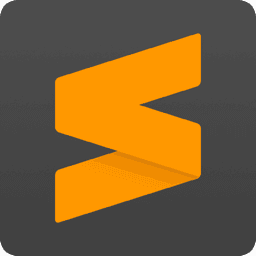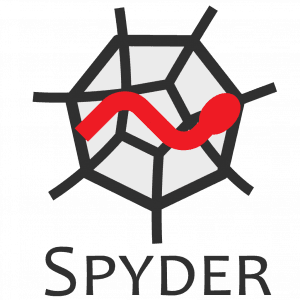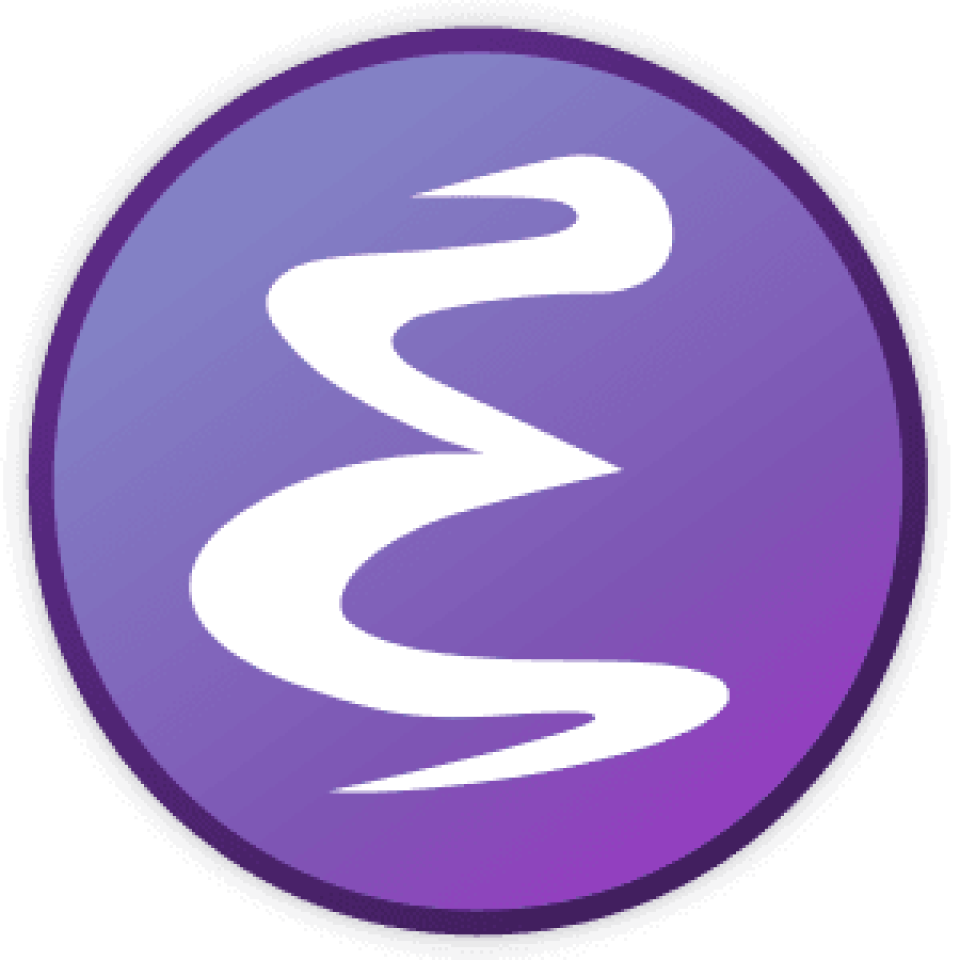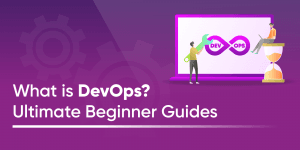Let's discuss our favorite Python IDEs. Python interpreters are available on most operating systems including Linux, macOS, and Windows. If you plan to work on larger projects, we recommend a dedicated code editor or an integrated development environment (IDE). Python IDEs and Python code editors offer their own distinct features and user interfaces.
In this article, we cover each of the most popular Python IDEs and Python editors. We evaluate their availability, use cases, and overall value. Note that each Python IDE offers a free tier. They also offer paid options for professionals. Our research below shows you how to find the paid professional options or the best free IDE for Python.
|
Featured Python IDEs & Editors |
|
Pycharm: Hugely popular, powerful, and feature-rich Python IDE. Related PyCharm Course |
|
Visual Studio Code: Lightweight and extensible code editor. Related VSCode Course |
|
Jupyter Notebook: Data Science IDE, easily run simulations and share data. Related Jupyter course |
Before moving on, let’s first dig into what Python IDEs and code editors are, and then we’ll discuss the requirements for these tools to create a good development environment.
What are IDEs and Code Editors?
Whether you’re a college freshman taking your first CS course, or a Staff Software Engineer, you need an IDE or a code editor to efficiently edit, read, and debug code.
An integrated development environment (IDE) is a software application that helps programmers to develop software efficiently. It increases developer productivity by combining common developer tools such as software editing, building, testing, debugging, and packaging in one easy-to-use graphical user interface (GUI). Other popular features include code refactoring, code search, code auto-completion, and continuous integration/continuous deployment (CI/CD).
Regardless of your preferred programming language or type of software development, an IDE will be one of your go-to tools.
Moving on to the IDE's cousin, the code editor. Sometimes mistaken for IDEs, the main difference between the two is that IDEs provide more powerful tools to simplify the coding process. Just getting started? We also listed our favorite Python courses for the year.
10 Best Python IDE & Python Code Editors
To help you choose the best Python IDE or code editor, we’ve done some extensive research to put a list together of the ten top Python IDEs and Python code editors based on popularity, functionality, number of users, and user feedback. We’ve also made sure to include IDEs and editors in this list that cater to both beginners and professional developers.
To make sure each of the IDEs and editors was up to the task, we took the time to put them through their paces. This included installing each on a Windows, macOS, and Linux platform, and then running a range of Python scripts from small individual files to multi-folder packages. This helped us to confirm that each of the options in this list was up to the task that they’d been designed for — whether that’s to assist beginner developers or allow professionals to level up their day-to-day coding experience.
1. PyCharm

Platform: Linux/macOS/Windows
Official website: JetBrains PyCharm
Type: IDE
Developed by JetBrains, PyCharm is one of the most popular Python IDEs. That's why we chose it as a default for the course, Python with Dr. Johns. With productivity tools like quick and safe code refactoring, PyCharm really stands out from the competition.
PyCharm comes in three versions: Apache-licensed Community version, Educational (Edu) version, and proprietary Professional version. The first two versions are open source and free of charge, but you’ll have to pay for the Professional version.
Our research confirms that the free Community version provides incredible value for beginners as it offers a variety of features such as syntax highlighting, auto-completion, and live code verification. The paid version offers advanced features like full database management along with a range of specific frameworks and web development tools. You can also take advantage of their new AI coding assistant extension with the paid version.
Advantages:
- Active community support
- Lots of useful plugins and productivity shortcuts
- Executes, edits, and debugs Python code without any external requirements
Disadvantages:
- Professional version is rather expensive
- Free tier offers less functionality than the paid versions
- Community version does not allow other programming languages to be used
2. Pydev
 Platform: GNU/Linux/macOS/Windows/Solaris
Platform: GNU/Linux/macOS/Windows/Solaris
Official website: Eclipse.org; PyDev.org
Type: IDE
Eclipse is a free IDE that was historically designed for the Java language. Still, thanks to a system of plugins or extensions, you can use it with other languages, including Python.
You’ll need the Pydev plugin to use Eclipse as a Python IDE, which then allows you to develop in Python, Jython, or IronPython. Pydev also uses advanced inference techniques to provide features like auto-completion and code analysis.
As one of the best IDEs for Python, Eclipse also provides these features: debugger, Django, interactive console, basic syntax highlighting, code coverage, and more.
Advantages:
- Easy to learn and feature-rich
- Has a large and active community
Disadvantages:
- User interface is not very less modern
- Plugins can be unstable
3. IDLE

Platform: Linux/macOS/Windows
Official website: Python Official Docs
Type: IDE
IDLE, or Integrated Development and Learning Environment, is a free IDE that comes bundled with any Python installation. It allows you to edit, run, and debug Python code in a simple Python shell and code editor environment, making it great for beginners.
As a cross-platform IDE, it is available on Windows, Linux, and MacOS. IDLE consists of a multi-window text editor with syntax highlighting and an integrated debugger that offers stepping, persistent breakpoints, and call stack visibility.
Advantages:
- User-friendly for beginners
- Offers features like syntax highlighting, search, auto-completion, & smart indent
- Integrated debugger with stepping & breakpoint features
Disadvantages:
- May be too simple for some
- Not suitable for large projects
- Lacks the advanced features offered by other IDEs
4. Visual Studio Code (VS Code)

Platform: Linux/macOS/Windows
Official website: VS Code
Type: Code Editor
Developed by Microsoft for Windows, Linux and macOS, VS Code is a free and extensible code editor (not to be confused with Visual Studio). VS Code is a small but comprehensive open-source code editor with an MIT license. It supports several programming languages, including Python after you install an extension. VS Code is relatively lightweight and comes with many useful features like syntax highlighting, code auto-completion, Git integration, and advanced code debugging. If you’re looking for a lightweight, fast, and customizable Python code editor, it’s a great choice.
One of the main advantages of VS Code is a design that makes great use of an extension-based architecture. Being lightweight, it can be easily extended by adding new components when they’re needed.
Advantages:
- Advanced customization with 30,000+ extensions in circulation
- Powerful code management engine
- You can import keyboard shortcuts from Python editors like Sublime Text or Atom
Disadvantages:
- Initial customization can be overwhelming/difficult due to the number of available extensions
- Extensions can be unreliable at times
5. Sublime Text

Platform: Linux/macOS/Windows
Official website: Sublime Text
Type: Code Editor
First conceived as an extension for Vim, Sublime Text is a generic text editor written in C++ and Python code. Since the launch of version 2.0, it supports 44 major programming languages, including Python. Sublime Text requires a paid license, but there is an option to evaluate the code editor for free (and without an enforced time limit!).
After installing Sublime Text, thanks to its different plugins and packages, you get a high-quality and powerful tool that is one of the best Python editors to help you with your development. It also incorporates most of the features you’d expect from a basic Python IDE, including customizable syntax highlighting.
Advantages:
- Fast, with very few bugs (big advantage)
- Offers a variety of customization with plugins
- Supports many languages
Disadvantages:
- License required
- Plugins can be confusing/difficult to install
- Steep learning Curve
6. Jupyter Notebook

Platform: Linux/macOS/Windows
Official website: Jupyter.org
Type: IDE
Jupyter Notebook is a free and open-source IDE that is used to create Jupyter documents. Uniquely, it is a web-based IDE that allows you to easily share your work.
Jupyter Notebook is very popular among data scientists as it’s great for machine learning, simulations, data visualizations, data analysis, and also for sharing and presenting findings. Jupyter is ready to work right out of the box, requiring little to no configuration. This makes it a perfect tool for quick Python scripting.
Advantages:
- Easy to use and learn
- Supports 40+ different languages
- Easy to share work
Disadvantages:
- Mostly suited to development in the fields of data and scientific computing
- Lacks advanced features offered by other IDEs
- Coding within independent cells may be difficult to manage as the cell count increases
7. Spyder

Platform: Linux/macOS/Windows
Official website: Spyder GitHub
Type: IDE
The Python scientific community has been maintaining Spyder since 2012. With basic features like syntax highlighting and auto-completion, Spyder also integrates several scientific libraries like Matplotlib, NumPy, IPython, and SciPy. It is free, multi-platform, open-source, and the installation is very easy with a Python package manager like Pip.
Spyder offers a unique combination of advanced analysis, debugging, editing, interactive execution, in-depth inspection, and visualization capabilities that are comparable to scientific software packages. Its main components are the interactive console, the documentation viewer, the variable explorer, and development tools. These features make Spyder one of the best IDEs for Python code in scientific development.
Advantages:
- Community support
- Rich set of development tools
- Comprehensive documentation
Disadvantages:
- Execution dependencies
- Optional dependencies
- Steep learning curve
8. Wing

Platform: Linux/macOS/Windows
Official website: Wingware.com
Type: IDE
Wing is a Python IDE that was specifically designed to provide a more productive development experience in Python. It offers a strong range of features including code feedback, syntax highlighting, code auto-completion, smart refactoring, and more.
Wing has three pricing tiers: Wing Pro (paid), Wing Personal (free), and Wing 101 (free). As a scaled-back version of Wing Personal, Wing 101 was originally designed for teaching entry-level computer science courses which makes it one of the best IDEs for Python beginners. As you’d expect, Wing Pro (the paid version) is the most feature-rich of the available options.
Advantages:
- Customizable and extensible
- Powerful debugger
- Feature-rich
Disadvantages:
- Minimal support for languages that aren’t Python-based
- Wing Pro can be expensive, and it has to be renewed annually
- UI is a little outdated
9. GNU/Emacs

Platform: Linux/macOS/Windows
Official website: GNU.org
Type: Text editor
GNU Emacs is a feature-rich text editor that is highly customizable via various extensions and it’s available to download for free on all platforms.
For Python development, you can use the Elpy extension This is a feature-rich Emacs extension for working with Python projects. Among its many features, we have to mention syntax highlighting that differentiates document elements such as keywords and comments, and automatic indentation which ensures consistent formatting throughout your file.
Advantages:
- Free and fully customizable
- Fully navigable via keyboard bindings (but you don’t have to)
- 24-bit color-encoded support for terminals that support this
Disadvantages:
- Steep learning curve
- Documentation may be out of date
10. Thonny

Platform: Linux/macOS/Windows
Official website: Thonny.org
Type: IDE
Thonny is advertised as the Python IDE for beginners. Designed to make life easier for new Python developers, Thonny is a simple and lightweight IDE with excellent features that is free of charge. This makes it one of the best IDES for Python beginners that want to start developing in a simple environment, but less so for expert Python developers that want more from their next Python IDE.
With a UI that is isolated from features that may distract beginners, Thonny is a well-thought-out pedagogical IDE for beginners who want to develop in Python quickly, easily, and simply.
Advantages:
- IDE adapted for beginners' learning
- Basic and functional user interface
- Easy to get started (comes with Python built-in)
Disadvantages:
- Not for the experienced developer
- Lacks advanced features offered by other IDEs
How to choose the best Python IDE in 2023?
For beginners, there are several Python IDEs that allow you to build a comfort level with the environment as you become steadily familiar with each feature.
For ease of installation, IDLE is a strong choice for beginners as it’s bundled with Python on your system. If you’d like to explore other options, Thonny and Wing 101 are excellent choices as they’ve both been designed with beginners in mind.
But if you’d like to code in a more professional environment, you could consider PyCharm as your next IDE, or if you’d prefer portability, VS Code is a solid choice as one of the best Python code editors.
Experienced and professional developers find themselves spoilt for choice. If you’re after an IDE that offers strong performance with larger projects, then Pycharm or PyDev (Eclipse) are popular options. Similarly, VS Code is often chosen when a code editor is preferred.
If you’re part of the ever-expanding data science community then Jupyter should be at the top of your list. Equally, Spyder is one of the best Python IDEs for scientific computing, so this may be a good choice if your development aligns with its strengths.
Then again, perhaps you’re a little more ‘old school’ and you’d prefer the look and feel of GNU/Emacs or Sublime, both of which are very popular with Linux developers.
|
Free Python IDE |
Python IDE for Mac |
Python IDE for Windows |
|
|
|
Why We Chose The Best Python IDE
Launched in 1991 by creator Guido van Rossum, Python was developed with an emphasis on code readability via syntax that allows developers to create more with fewer lines of code. This is why if you’re new to programming, it is often recommended that you start with Python. And if you’re looking to boost your productivity when developing Python code, you’ll want the best Python IDE or Python editor.
The Python language has evolved enormously over the years thanks to the contribution of Python developers and programmers worldwide. It’s now one of the most widely used programming languages with a huge range of packages, libraries, and frameworks.
Python is a versatile language that can be used for various applications including Blender (3D modeling software), machine learning/artificial intelligence, and web development to name a few. So a Python IDE need not be complex. The language is often used for scripting, so lightweight text editors like Notepad++ or even plain Notepad can be useful Python tools.
That's why our evaluation resulted in a few distinct choices for the best Python IDE. Note that the best free options differ from the best options on Windows.
Conclusion
Python is one of the most well-known languages and perhaps even the most popular. If you’re looking for the best Python IDE to boost your productivity, you have a multitude of useful, practical, and powerful Python IDEs to choose from, be they paid options or free. Equally, if you prefer a lightweight code editor, there’s plenty to choose from in both the free and paid tiers.
If you’re a Python beginner then Python with Dr. Johns course is a great place to start your beginner-to-expert Python developer journey.
Frequently Asked Questions
1. What Is the Best IDE for Python?
The best Python IDE is that which enhances your coding experience and productivity by the greatest margin. If you’re a beginner, then it may be good to start with IDLE, Thonny, or Wing 101. If you’re an experienced developer, you can choose any of the IDEs we’ve covered, but the most popular choices tend to be Pycharm for an IDE and VS Code for a code editor.
2. Which is the Best Python IDE for Beginners?
Several Python IDEs have been designed with beginners in mind. These let you build a comfort level with the environment as you become familiar with each feature. IDLE is a good choice as it’s installed with Python. Thonny and Wing 101 are also excellent choices as they offer simple UIs that were designed for beginner developers. Pycharm’s free tier is also one of the best Python environments for beginners.
3. What Is the Official IDE for Python?
There is no official IDE for Python per se. IDLE is bundled with Python, so it could be viewed as the official IDE, but the Python developer community is open-minded and collaborative, meaning that there’s extensive user support and feedback for each of the Python IDEs we’ve covered.
4. Which Python IDE Should I Use for Machine Learning?
Jupyter is a popular choice for machine learning developers as it offers ease of use with running simulations and sharing results with others. Similarly, Spyder is popular with the data science community due to its extensive scientific computing features and library integration. However, any of the IDEs we’ve covered can be used for machine learning if you’ve installed the necessary libraries.
People are also reading:
- What is Pycharm?
- Python Programming Language
- Python Best Courses
- Best Python Libraries
- Best Python Courses
- Best Python Certifications
- Best Python Books
- Python Projects For Beginners
- Top Python Interview Questions

![7 Best AI Coding Assistants In 2023 [Free + Paid]](jpg/16952882603blllo1oza.jpg)
![30 Cool, Easy & Fun Python Projects + Source Code [2023]](png/1655865129yuz5v1mdab.png)

![The 14 Best TensorFlow Courses in 2023 [Free + Paid]](png/1624550510xonrryd0t0.png)
![10 Best Design Books for Design Students [Updated]](png/1642872008wcnbdsvf6q.png)
![I Ranked the Top 5 Best AI Image Generators [with Image Examples]](jpg/1682848644stltm9ynp6.jpg)




